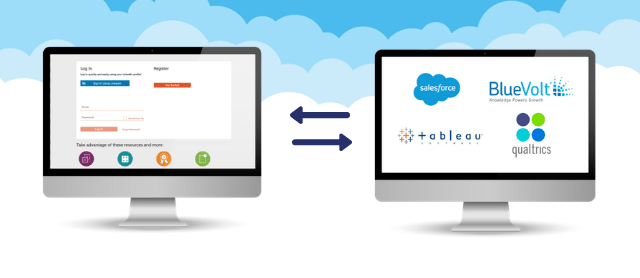What does every food and beverage distributor have in common? Almost all of them could greatly benefit from improving their supply chain data analytics. The problem? Accessing much of this data can be difficult.
Last month Incentive Solutions VP of Marketing and Creative Services Nichole Gunn wrote an article for Food Logistics about how food and beverage distributors can use channel incentives to improve their supply chain data analytics.
Challenges of Collecting Supply Chain Data for Food and Beverage Distributors
Often, food and beverage distributors face gaps in technology when it comes to collecting data throughout their supply chain. Supply chain partners are often reluctant or unwilling to share information. Why should they? To quote Nichole Gunn:
“For food and beverage manufacturers and distributors, tracking sales data and building out marketing profiles for partners throughout your distribution chain can be fraught with challenges. Logistically, how do you collect, verify and consolidate your sales channel data? Motivationally, how do you inspire your supply chain partners to consistently provide the information you need? Technologically, how do you streamline this process for your partners and for your sales and marketing teams?”
When it comes to solving these challenges, an incentive program might not be the first thing that pops into your mind. But it’s time to adjust your expectations. Nichole explains:
“Modern incentive programs provide platforms to collect, verify and track sales data; integrate this data with your existing CRM or ERP; and reward supply chain partners for doing their part in helping you maintain accurate data across your distribution channel.”
Now let’s explore how this works!
Using Incentives to Build Accurate Partner Programs
Like any distributor, food and beverage distributors rely on a network of channel partners in order to go to market. Maintaining accurate partner profiles is essential for their sales and marketing efforts. However, most supply chain data analytics are inaccurate and out-of-date. Furthermore, supply chain partners need a compelling reason to supply this data.
Incentive programs help solve this problem in several ways:
- Incentive programs supply a compelling value proposition that is easy to communicate.
- The promise of exciting reward-earning opportunities motivates supply chain partners to register for the incentive program.
- Customizable enrollment forms allow food and beverage distributors to capture the necessary data analytics at enrollment.
- Through their incentive program, food and beverage distributors can send out interactive surveys to make sure their supply chain data analytics profiles are still accurate.
- Distributors can use Open Enrollment to invite unknown supply chain partners to enroll in their incentive program.
- Incentive programs open up new avenues for communication and incentive-based marketing to personalize relationships and create value.
Tools Food and Beverage Distributors Can Use to Facilitate Sales Data Exchanges
When it comes to supply chain data analytics, accurate partner profiles are just one part of the equation. Equally important for food and beverage distributors is being able to fill out these profiles with up-to-the-minute sales data.
Often, supply chain partners drop the ball when it comes to sharing invoices and documentation of their sales and purchases. To quote Nichole Gunn:
“After all, when left to their own devices, supplying this documentation probably isn’t a high priority for your dealers and wholesaler sales reps. However, maximizing motivation and minimizing manual processes can measurably improve your chances of accessing this data.”
Incentive rewards provide motivation, but food and beverage distributors need to take things one step further. Making it easy and intuitive for channel partners to submit sales claims and attach supporting documentation will drastically improve the quality of your supply chain data analytics. To learn more, check out Performance Tracking – the most powerful supply chain data collection tool around, including an option for a sales claims verification feature!
Integration, Segmentation, and Reporting for Supply Chain Data Analytics
Supply chain data analytics won’t do food and beverage distributors much good if this data doesn’t integrate with their existing software or allow them to segment, manipulate, and report on this data. To quote Nichole:
“Segmenting your partner profiles by organization, vertical or region is important for keeping your data organized, personalizing your outreach to supply chain partners and measuring your ROI. Speaking of ROI, the ability to create custom reports and program dashboards allows you to track the effectiveness of your sales and marketing strategies, both granularly and at a high level.”
The more accessible this data is for your sales and marketing teams, the more equipped they’ll be to act on it.
Using Incentives and Data to Improve Supply Chain Partnerships
Non-cash rewards, on their own, will help to provide engagement and personalization that most food and beverage distributors struggle with. But the real power of an incentive program comes from using your new supply chain data analytics and the new communication platforms your program provides to provide enablement and personalize brand interactions to match the buyer’s journey.
We’ll end things today with a quote from Nichole’s article in “Food Logistics”:
“For manufacturers and distributors in food and beverage, supply chain partnerships are key conduits for reaching end consumers. Investing in those partnerships will hugely impact your ability to go-to-market, scale horizontally and vertically, as well as your overall profitability.”



